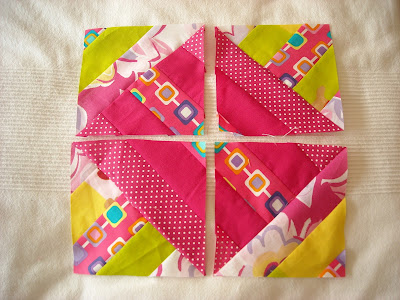These fortune cookie bags are wonderful. So useful and pretty. I have made about a dozen of them and given them as presents to family and friends. I saw something similar at the V & A awhile ago and thought it was such a good idea. You can put just about everything in it. It can be used as a shopping bag (to save using plastic ones), for carrying your gym kit or your swimming things, to carry baby things, or even to keep your knitting or crafts in. I have used mine for most of the above (no babies). One of my friends wore hers to a wedding. Another friend called it a "Tardis' bag as it holds so much.
This is what it looks like when it is flat.
This is another one with the 'ears' tied to make a handle.
To use it, you simply tie the 'rabbit ears' together and sling it over your arm or over your shoulder.
How to Make It
With wrong sides together, cut a diagonal line from the top left hand corner to the bottom right hand corner.
Now cut a diagonal line from the top right hand corner to the centre of fabric.
Finally, cut a little square in the middle of the V (about 4" by 4").
With right sides together, stitch the smaller triangles to the larger triangles, leaving a little space at the top to insert the gussets.
Make a little gusset by folding the squares in half and inserting them in the V's of the bag as shown. I have used white thread so it is easier to see. However, when I make this bag, I will use matching thread.
The one below is finished.
Stitch all all around the sides and bottom of the bag, leaving the centre free.
Stitch down the inside of the bag handles ('ears') about 7".
Finish all raw edges by edge stitching or zig zagging.
Press, turn to right side and you are finished.
To use the bag, tie the handles together at the top. You can wear it over your shoulder or over your arm.















































